Propaganda during the Korean War is an interesting topic that hasn’t always been tackled properly. At the beginning of the Korean War, the UN called on its member nations to join an effort to support Korea. Communist forces were rapidly mounting propaganda campaigns against the Republic of Korea. In this way communists forced the UN to call on help from allied states.
This put the US in a situation unlike any other they had dealt with in the Twentieth Century. Their aim was not the surrender of either force or win in combat – it was to avoid casualties where possible; to leave doubts throughout the communist population; and to encourage defections of enemy forces. With these aims in mind, the US started a large and extensive counteroffensive propaganda campaign.
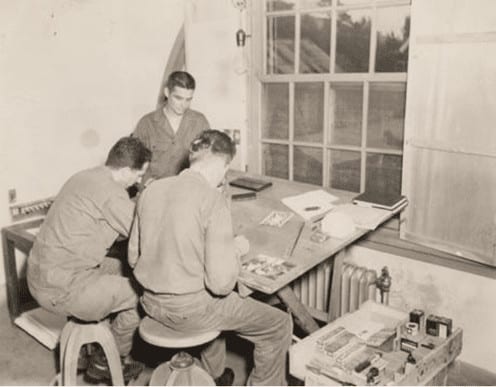
So What?
The Korean War was one of the most significant humanitarian crises of the Twentieth Century. The use of Information Warfare through leaflets and radio was a prominent part of the war. This significantly improved existing psychological warfare techniques. The use of this type of information warfare is one of the earliest known examples of ‘advertising’ within a military context . Once thought of as ‘the job of professors in offices,’ information warfare came to the forefront of US conflict strategy.
Tensions nowadays still remain high Between North and South Korea, with skirmishes along the border being frequent. Could UN and US propaganda during the Korean War have attributed to this continued agitation?
Background
The Korean War began following World War II in June of 1950. The US and the Soviet Union partitioned Korea into two countries in 1945 due to an agreement. However, the conflict did not immediately stop. Tensions continued to rise following the division of Korea.
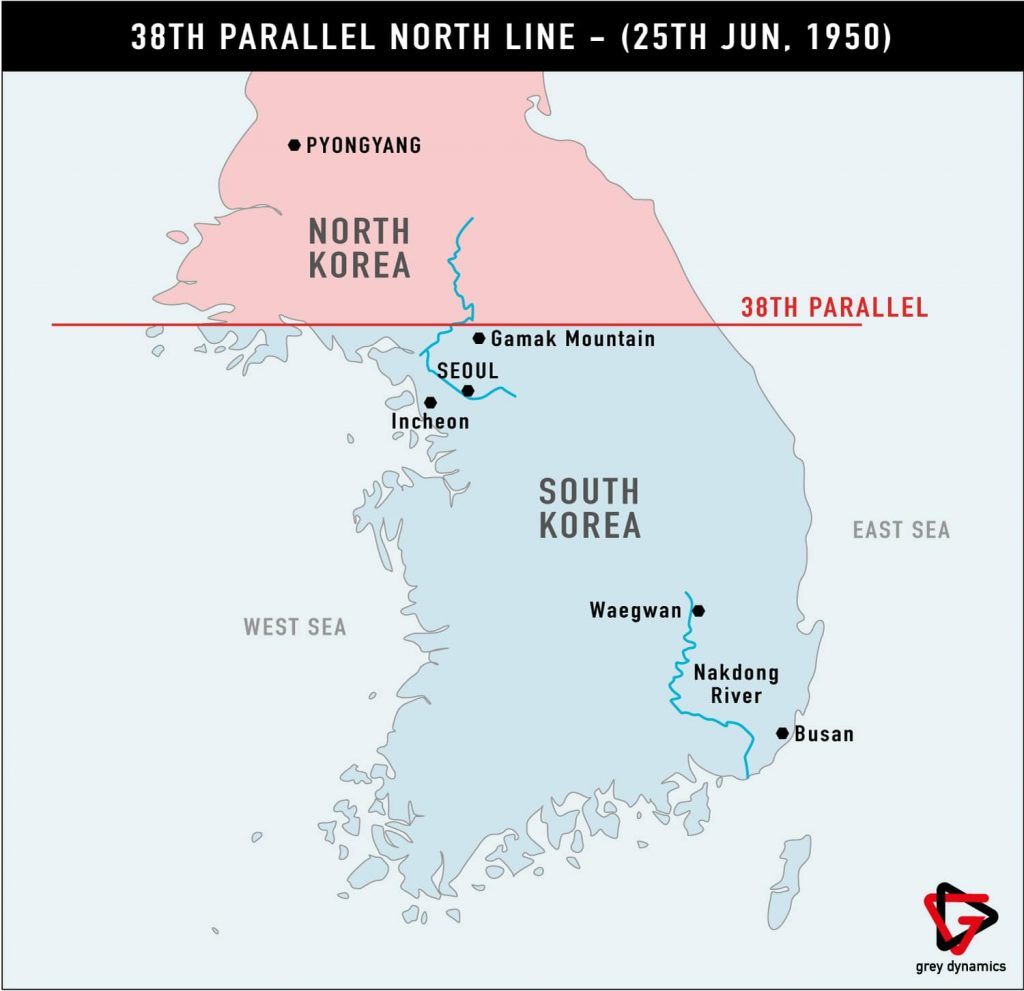
The Democratic People’s Republic of Korea (North Korea) began a military offensive against The Republic of Korea (South Korea) on the 25th of June 1950, signalling the start of the Korean War.
Methodology
Radio Broadcasts
Radio broadcasts began on the 29th of June in Tokyo using existing Radio Infrastructure to spread messages quickly and easily to a large region. US forces set this up quickly to counter the quickly escalating communist military and propaganda campaign.
US and UN quickly highlighted Radio broadcasts as an efficient mode of propaganda at the beginning of the Korean War. As a result, the US Military intelligence Far East Section established the 1st Radio Broadcasting and Leaflet battalion (1st RB&L). 1st RB&L established multiple radio stations, including ‘Radio Tokyo’ and the ‘Voice of the United Nations Command’, to spread mass anti-communist propaganda during the course of the Korean War.
Whilst initially only transmitting messaging in Korean, the 1st RB&L later recruited multiple announcers, translators, and writers, to spread further messaging in Korean, Japanese, and multiple Chinese dialects. Ultimately, the 1st RB&L was decommissioned in 1954 following the conclusion of the Korean War.
Leaflet Drops
The US army had a dedicated department to produce anti-communist propaganda during the Korean War: The Psychological Warfare Section, Far East Command, Headquarters Eighth United States Army Korea (EUSAK), Military Intelligence Section. Following orders from the UN, warplanes dropped large numbers of leaflets across communist-occupied areas to encourage defection.
In addition to this, the Far East Command was in charge of keeping morale high in South Korea. Just 24 hours after President Truman states that the US would intervene in the Korean War, the FEC has dropped over 12 million leaflets over the Republic of Korea. These leaflets encouraged the Republic of Korea population to resist communist messaging and reassure that the UN support was on its way.
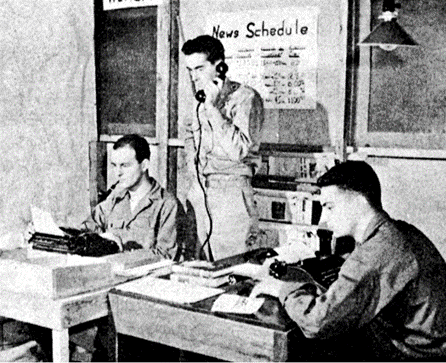
The leaflet information warfare effort was incredibly vast: estimates of the number of leaflet designs created by the US in the Korean War range from 600 to 8,000. US propaganda effort during the Korean War pulled on traditional propaganda themes designed to change the popular discourse to alter behaviour. These themes include ideological appeals, personal gratification through defection, and misinformation dissemination.
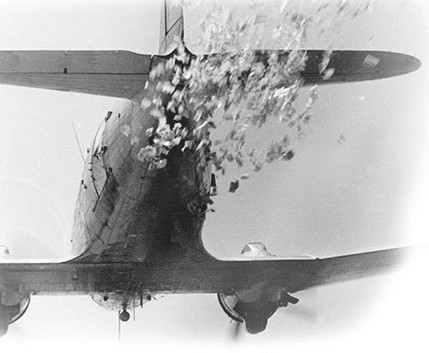
Most interesting is the development of leaflet drops as tradecraft during the Korean War. In terms of distribution, US forces dropped leaflets simply in crude piles from within the pilot cockpits. However, by the end of the war, American troops distributed leaflets using twine-bound stacks of propaganda material. Similarly, US propagandists used better quality illustrations and materials used to play into the promise of a better life for North Korean troops should they defect.
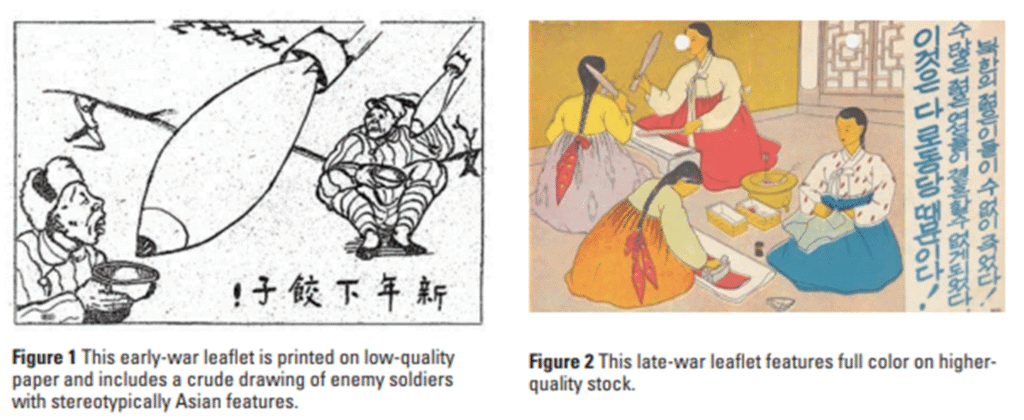
Conclusions
An Armistice was signed on the 27th of July 1953, ending the Korean War with a stalemate. Whilst the UN and the US dedicated extensive resources to developing propaganda during the Korean War, the efficacy of these operations is likely not as large as reports suggest due to fundamental shortcomings during the misinformation campaign.
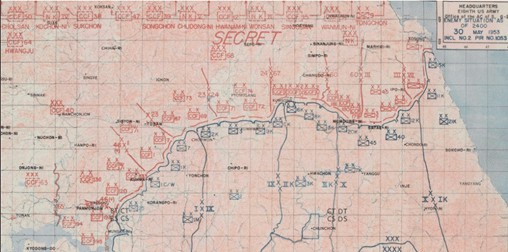
Many American Army Officers lacked experience of this type of informational warfare. This led to multiple problems: leaflets were sometimes dropped in uninhabited areas. The leaflets and radio broadcasts produced were too complex for the North Korean and Chinese populace, many of whom were illiterate. Those the propaganda was directed to, misunderstood it due to the language and cultural barrier
Similarly, the negative stereotyping during propaganda campaigns on both sides of the Korean War may have only deepened the divide between the Koreas and perpetuated negative prejudices that make meaningful dialogue between the two powers more difficult.
Overall, the UN and US propaganda operations during the Korean War may have been detrimental to their long-term aims.

